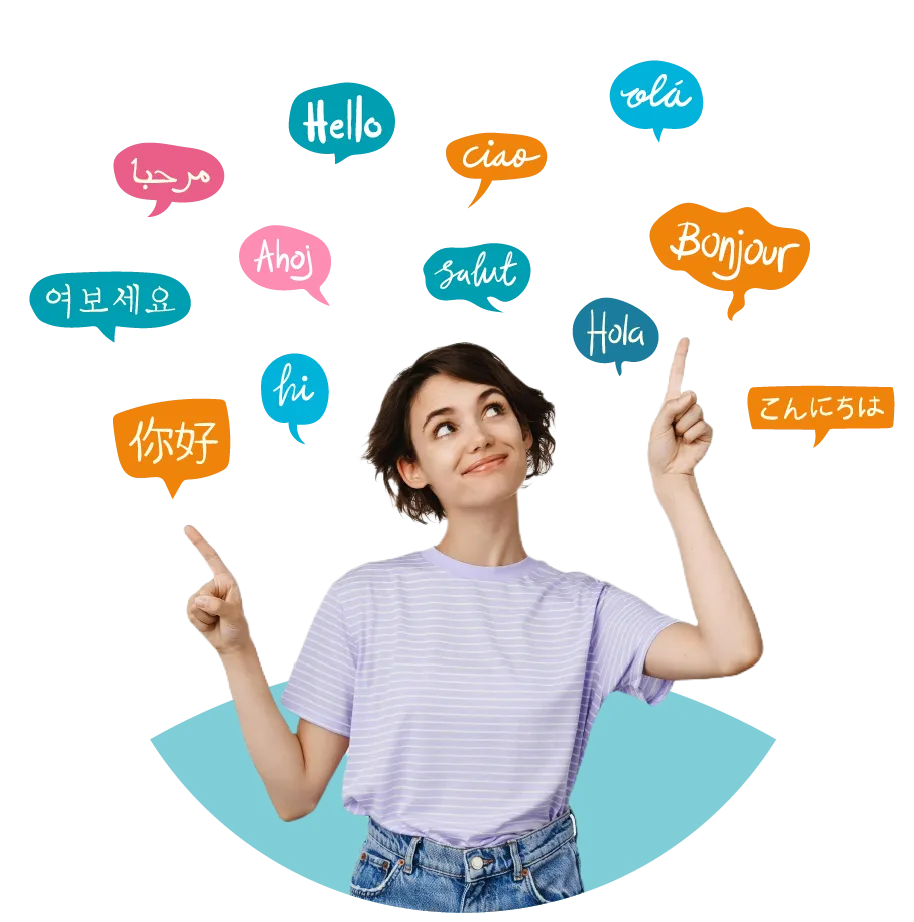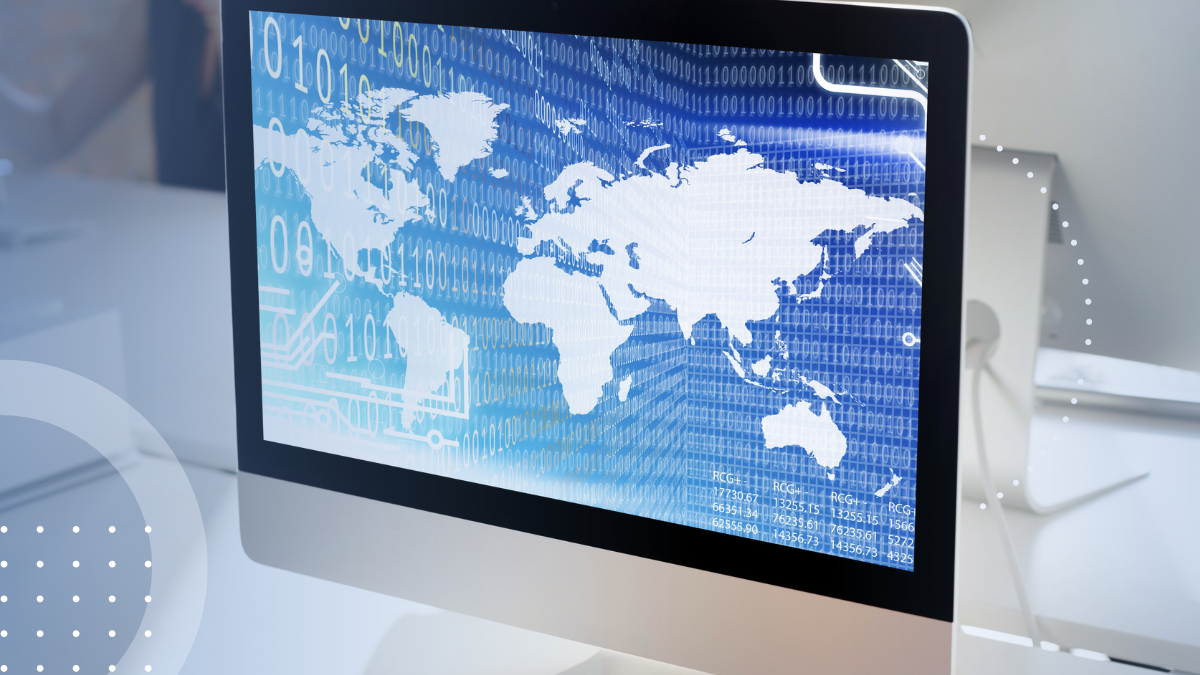Translation and Localisation Services
Communicate effectively across different markets, cultures, and contexts and ‘go global’ with custom translation and localisation services.
Translation and Localisation Services for Your Content
Ads Translation
Blog Translation
E-Commerce Translation
Email Marketing Translation
Social Media Translation
Software Translation
Survey Translation
Website Translation
Expand Your Brand's Reach
With a Translation Partner by Your Side
Areas of Expertise
We help businesses in a wide range of industries gain insights from their audio or video content,
maximise their content strategies, and save time. We do this by collaborating with professional transcriptionists
and SMEs that can assure industry-specific vocabulary and accuracy.








Our Languages
With a global team of over 1,000 experts worldwide, we offer reliable linguistic solutions in more than 30 languages, including:
- Danish
- Dutch
- English
- Estonian
- Finnish
- French
- German
- Hungarian
- Italian
- Latvian
- Lithuanian
- Norwegian
- Portuguese
- Polish
- Romanian
- Spanish
- Swedish
- And many more

Why Choose Optimational?
NATIVE TRANSLATORS
We work with native translators of the target language to make sure that your content sounds natural and engages audiences.
DATA SECURITY
We handle data via secure platforms and partner with language experts who consent to work under NDA to ensure data protection.
Guaranteed Quality
We have rigorous quality control processes to ensure that your translations and localisations are unique, accurate, and high-quality.
GROWTH MANAGEMENT
A growth manager will work with you from start to finish, maintaining a proactive approach to meet your international business goals.
Looking for More Multilingual Solutions?
Translation Integrations to Maximise Efficiency and Quality
- Enhance Efficiency: Effortlessly connect and collaborate within your existing systems.
- Boost Productivity: Seamlessly transfer data and streamline processes for quicker results.
- Save Time: Eliminate manual data entry and reduce duplication efforts.












Translation and Localisation Frequently Asked Questions
Translation is the communication of written information from one language (also known as the source language) to another (also known as the target language.) (Note: When we refer to spoken information, the appropriate term to use is ‘interpretation’.)
The purpose of content translation is to convey the original intention and tone of the source language message in the target language. To achieve this, translators consider regional and cultural differences in the target language.
To ensure the quality of content translations, many modern-day translators and translation agencies use sophisticated technologies and tools to help streamline and simplify their tasks. As a result, high-quality consistent translations are produced.
Language localisation (L10N) refers to the process of adapting a message or product—such as apps, games, websites, digital platforms, video games, and more—and making it linguistically and culturally appropriate for its use by new audiences.
Additionally, localisation can be done for markets in a different cultural context or a different language. If the language is different, translation will be the first step of the process and localisation will follow
“Translation” is the process of reworking a message from one language into another so that the meaning is equivalent. It aims to convey the same meaning and focuses heavily on grammar and syntax.
Alternatively, “localisation” is a more comprehensive process that involves adapting content for its use in a different country or locale. Localisation takes into consideration a culture’s norms, beliefs, and values so that the content does not include any confusing or offensive language or references. In short, localisation takes your content and allows it to capture and resonate with a new audience in a new location.
Read more about the main differences between localisation and translation.
Essentially, the main types of translation services include:
- Human Resources Translation: Employee manuals, benefits plan, training programs and videos, surveys, etc.
- Legal Translation: Contracts, birth certificates, agreements, and more.
- Financial Translation: Banking-related papers, insurances, crypto translation, etc.
- Marketing Translation: Brochures, booklets, content marketing, social media, email marketing, ads, etc.
- Scientific Translation: Patents, papers, journal articles, etc.
- Technical Translation: Product catalogues, IT documentation, product manuals, etc.
- Website Translation: Website information, services, videos, graphics, blog content, etc.
Considering that only 10% of the world’s population speaks English as their mother tongue, there are many benefits professional translation services can bring to businesses. We share some with you:
- First, improve international companies’ brand image. Every company with a global presence must consider all the countries targeted. Translation services will allow you to successfully communicate your company’s purpose and values and to create consistent corporate cultures.
- Second, engage new audiences. If you translate content into a new language, more people can interact positively with the brand, service, or product.
- Third, close deals with potential customers. Translating business agreements or contracts into the language of the people you are negotiating with can make them feel valued and considered.
- Fourth, boost customer satisfaction. By creating content tailored to a new market, audiences will resonate with the local culture.
- Fifth, boost your SEO results. Translation services will help your company build an international presence and gain credibility as a global business.
Learn more about the benefits of using language translation services to grow your business
Document translation services involve creating local versions of documentation for international users. This service helps bridge the communication gap by ensuring that the global audience can understand messages and information in their language. And, as we know, proper communication is essential for global understanding. Some types of documents that often require translations
for international users include:
- User Guides
- Technical Manuals
- Financial Documents
- Marketing Content
- Online Help System
Technical translation services refer to the translation of technical or scientific documents. In other words, documents related to the practical application of scientific research or technical information.
Highly specialised professionals in industries like healthcare or construction usually translate
these materials. That is why the translation of technical documents requires an in-depth understanding of their specific requirements and nature. This is because a mistake in the accuracy of a technical translation could hinder the effective practical application of scientific or technological information.
Also, a poor technical translation could lead to problems—such as legal proceedings—linked to
non-compliance.
Some cases in which technical translation is needed include:
- Purchasing of equipmentor machinery from a foreign supplier. In this case, documentation of the internal processes is necessary to purchase the product.
- Selling services and productsabroad and providing prospective buyers with the necessary documentation in their language.
- Having a specialised site or technical text.
The costs for translation and localisation services are usually estimated on a per-word basis. But several factors can determine the price and the schedule of a translation assignment. This means that translation prices and schedules are always project-specific.
Some factors affecting translation costs are:
- Language Pair. That is, the source and target language.
- Workflow. It includes the number of linguists involved, the nature of the task, etc.
- Deadline. If the translation is urgent and needs to be done overnight or over the weekend.
- Translation Scope. If the document requires a sworn translator or if it includes industry-specific terminology.
Machine translation is a useful resource that continues to improve each day thanks to the use of AI. But that does not mean you should use machine translation without revision.
Machine translation can be sloppy if not verified by a human. Human translators can understand
the context in which the target language is used, and they can dig deeper to understand the true meaning of the content. In other words, professional translators can make informed decisions on how to translate.
This means that the results of human professional translation services are culturally sensitive translations that successfully reach new audiences. Translators put their creativity and imagination into action to achieve texts, videos, marketing campaigns, and manuals that capture the original meaning and convey the message intended in a new text.
Thus, machine translation is a great resource but should be combined with professional translation services.
A localised product should be perceived as if it had been created specifically for a target market. Therefore, some content that is typically localised includes:
- Regulatory Requirements
- Technical Requirements
- Terminology
- Business Practices
- Message
- Visual Elements (Symbols, Icons, Graphics, Colours)
- Currencies
- Units of Measurement
Our Latest Blog Posts

White-Label Translation Services: Best Practices for Quality Assurance
Discover the essential white-label multilingual services best practices to streamline your workflow, maintain brand consistency, and meet the demands of a global audience. Learn how adopting these strategies can help you scale efficiently, enhance service quality, and build lasting client relationships across multiple markets.

Travel Agency Marketing Strategy—7 Things Nobody Told You
Essential Travel Agency Marketing Strategy Tips You Haven’t Heard Before

Software Localisation Process: All You Want and Need to Know
Mastering the software localisation process is crucial for global success. Explore our comprehensive guide to rock your digital product in the world!